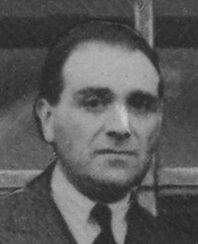Arthur Felix facts for kids
Quick facts for kids
Arthur Felix
|
|
|---|---|
 |
|
| Born | 3 April 1887 Andrychów
|
| Died | 17 January 1956 (aged 68) |
| Known for | Weil–Felix test |
| Awards | Fellow of the Royal Society |
| Scientific career | |
| Fields | Microbiology |
| Institutions | Lister Institute |
Arthur Felix (born April 3, 1887, died January 17, 1956) was a Polish-born scientist. He was a microbiologist, which means he studied tiny living things like bacteria. He was also a serologist, focusing on blood serum and how it fights diseases. Dr. Felix made very important discoveries about diseases like typhus and typhoid fever. His work helped create tests and vaccines that are still used today.
Contents
Becoming a Scientist
Arthur Felix was born in Andrychów, a town in Poland. His father, Theodor Felix, was interested in printed fabrics. He encouraged young Arthur to study chemistry, especially how to make dyes for textiles.
Studying Chemistry
Arthur went to Vienna to study chemistry. He earned a special degree called a Doctor of Science. After working for a short time in his father's textile factory, he decided to go back to Vienna. This time, he wanted to study microbiology, the science of very small living things.
A New Interest
Arthur Felix was from a Jewish family. While he was a student in Vienna, he became interested in Zionism. This was a movement to create a Jewish homeland. Later in his life, he became an expert on the region of Palestine.
Important Discoveries
Dr. Felix made some big breakthroughs in understanding and fighting diseases. His work helped save many lives.
The Weil–Felix Test
In 1915, during World War I, Arthur Felix was an Austrian medical officer. He worked in a field laboratory with another scientist named Edmund Weil. They were in a place called Sokal.
- They found a way to test for typhus, a serious disease.
- Their test used a special type of bacteria called Proteus.
- This bacteria reacted with antibodies in the blood of people who had typhus.
- This discovery led to the famous Weil–Felix test, which helped doctors diagnose typhus and similar illnesses.
Understanding Bacteria
Felix and Weil also helped create a system for classifying bacteria. This system uses the letters O and H. These letters came from their research on how bacteria behave.
Typhoid Fever Breakthroughs
Dr. Felix also did a lot of important research on typhoid fever. This is another serious bacterial infection.
- In 1934, he discovered something called the Vi antigen.
- Antigens are like markers on bacteria that the body's immune system can recognize.
- This discovery was made with a fellow scientist, Miss R. Margaret Pitt.
- Miss Pitt worked with Felix on many projects. Sadly, women scientists often didn't get as much credit as they deserved back then.
Finding the Ty2 Strain
Felix and Pitt also found a specific strain of bacteria called Salmonella Typhi Ty2.
- This strain was found in 1918 in a patient from Kherson.
- Ty2 is still used in laboratories today for research.
- It was also the basis for the Ty21a vaccine. This vaccine helps protect people from typhoid fever.
- They learned that Ty2 had a special "capsule" (the Vi antigen) that helped it avoid being attacked by the body's defenses.
More Discoveries
Felix and Pitt also found antigens in other bacteria that cause Paratyphoid fever. Dr. Felix also wrote a big review about typhoid fever with another female scientist, Miss M. Rhodes.
Lasting Impact
Much of what we know today about how typhoid fever affects the body comes from Dr. Felix's work. His research also laid the groundwork for the two main typhoid vaccines used around the world today.
Life After the War
After World War I, Arthur Felix moved to Britain. He started working at the Lister Institute. This is a famous place for medical research.
Working Around the World
Dr. Felix worked in several different cities during his career:
- Bielsko
- Vienna
- Prague
- London
- From 1927 to 1945, he worked in Jerusalem for the Hadassah Medical Organization.
Awards and Recognition
In 1943, Arthur Felix was given a very high honor. He was elected a Fellow of the Royal Society. This means he became a member of a very old and respected group of top scientists in the United Kingdom.

